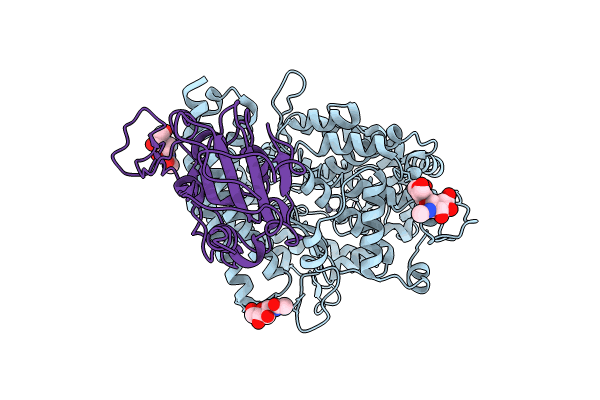
Deposition Date
2023-08-05
Release Date
2024-01-31
Last Version Date
2025-07-23
Entry Detail
PDB ID:
8KC2
Keywords:
Title:
Cryo-EM structure of SARS-CoV-2 BA.3 RBD in complex with golden hamster ACE2 (local refinement)
Biological Source:
Source Organism:
Mesocricetus auratus (Taxon ID: 10036)
Severe acute respiratory syndrome coronavirus 2 (Taxon ID: 2697049)
Severe acute respiratory syndrome coronavirus 2 (Taxon ID: 2697049)
Host Organism:
Method Details:
Experimental Method:
Resolution:
2.60 Å
Aggregation State:
PARTICLE
Reconstruction Method:
SINGLE PARTICLE


